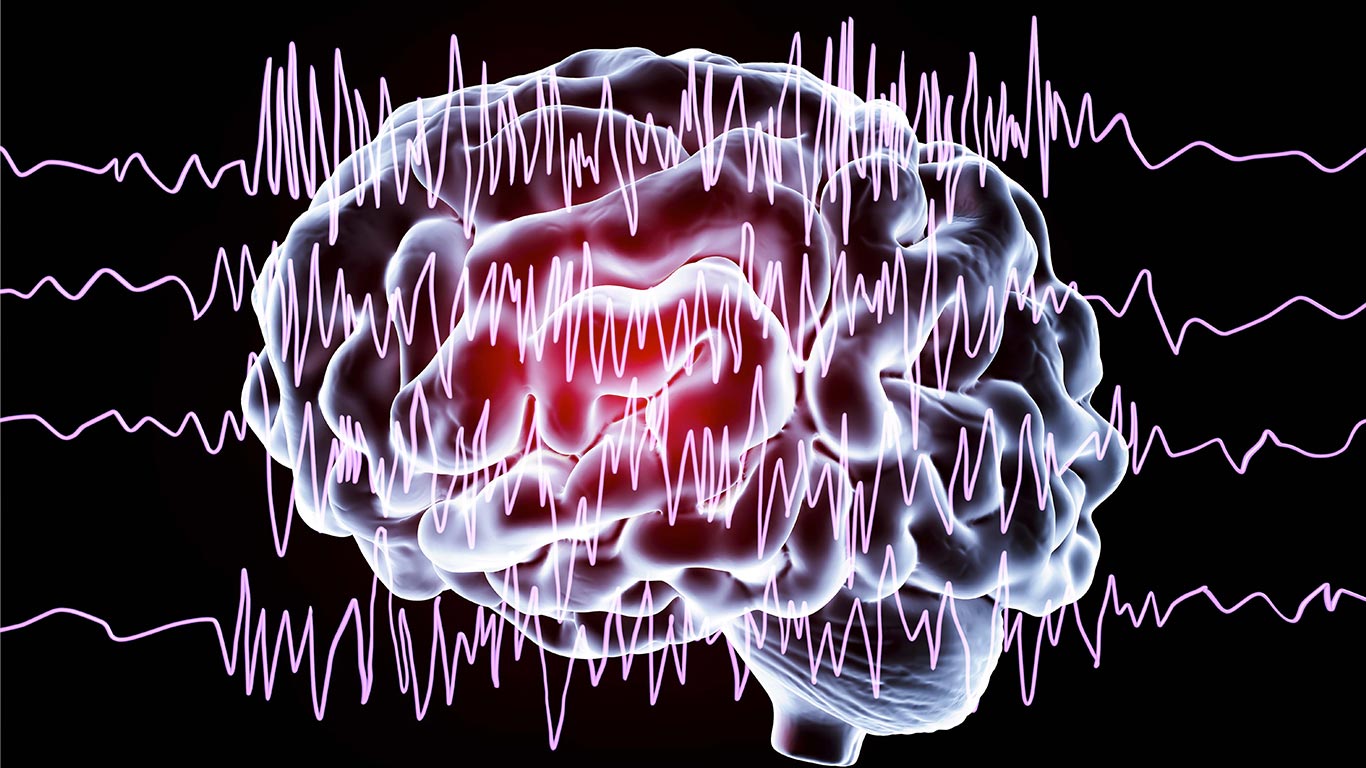What Are the Epilepsies?
- Category: Health & Wellness
- Posted On:
- Written By: LVMC

Epilepsies are a group of neurological (central nervous system) disorders in which brain activity becomes disrupted or abnormal to cause symptoms including seizures, loss of consciousness, and temporary paralysis. Epilepsy affects an estimated 3.4 million people in the U.S.—13.8% of whom are children. Living with epilepsy can be difficult, given a seizure can happen at any time. However, epilepsies can be successfully managed and treated using medications, surgery, and a number of proven therapies.
Read on to learn more about the different types of epilepsies, and about how Lompoc Valley Medical Center can help you or your child safely manage epilepsy.
What Are the Symptoms Of Epilepsies?
Seizures are the most common and prevalent symptom of epilepsy, though different types of seizures will have different symptoms. A seizure may last anywhere between a few seconds to a few minutes.
Signs and symptoms of seizures include:
- Twitching of the face
- Slight twitching of all or parts of the body
- All-over body convulsions
- Uncontrollable jerking movements of the limbs
- Temporary confusion
- Blank stare while remaining still
- Loss of consciousness
- Affected speech
- Temporary loss of bladder or bowel control
- Anxiety, fear, or déjà vu
A person with epilepsy will normally have the same type of seizure with the same symptoms on a regular basis, which can make it easy for doctors to identify and diagnose the type of epilepsy.
What Are Causes and Risk Factors Of Epilepsies?
Epilepsy can be caused by a wide range of factors but has no identifiable cause in about half of people with this neurological disorder. Common causes and risk factors of epilepsies include:
- Genetics and a family history of epilepsy
- Head injury and trauma
- Prenatal injury on behalf of poor nutrition or injury in the mother
- Brain conditions such as stroke and brain tumor
- Certain infectious diseases such as AIDS and meningitis
- Developmental disorders such as autism
- Dementia
- High fevers in childhood that lead to seizures
Epilepsy can affect males and females of any age, though the onset of this neurological disorder occurs more frequently during childhood and older age.
What Are the Different Types Of Epilepsies?
There are many different types of epilepsies—all of which are classified as either generalized epilepsy or partial epilepsy. In generalized epilepsies, seizures are produced by abnormal electrical impulses that occur throughout the entire brain. In partial epilepsies, seizures are produced by electrical impulses generated from a small or localized part of the brain.
Here are common types of epilepsy:
- Absence Epilepsy: In this type of generalized epilepsy, people experience loss of consciousness that lasts a few seconds and may or may not be accompanied by other symptoms. People may start staring blankly in the middle of an activity and fail to remember having a seizure.
- Temporal Lobe Epilepsy: As the most common form of partial epilepsy, temporal lobe epilepsy affects 6 in 10 people with partial epilepsy and usually begins during childhood or teenage years. Temporal lobe epilepsy causes seizures characterized by nausea, fear, déjà vu, and staring spells.
- Juvenile Myoclonic Epilepsy: Juvenile myoclonic epilepsy is the most common type of generalized epilepsy and usually begins during the teenage years. This type of epilepsy is usually caused by genetics and commonly produces seizures characterized by brief, sudden muscle jerks that occur shortly after waking.
- Frontal Lobe Epilepsy: This type of partial epilepsy affects the part of the brain that controls movement. Seizures caused by frontal lobe epilepsy usually cause muscle weakness and uncontrolled movements such as grimacing, twisting, and waving the limbs.
- Neocortical Epilepsy: Neocortical epilepsy is epilepsy that originates in a part of the external surface layer of the brain and can be either generalized or partial. Symptoms of seizures associated with neocortical epilepsy may include muscle contractions and convulsions, visual hallucinations, and emotional changes.
- Lennox-Gastaut Syndrome: This type of epilepsy is characterized by recurring seizures that often begin in childhood between the ages of three and five years. Seizures associated with Lennox-Gastaut syndrome usually occur during sleep and cause muscles to stiffen uncontrollably. Seizures that occur while people are awake may cause sudden falls and a brief loss of consciousness.
- Rasmussen's Encephalitis: This rare type of epilepsy usually affects only half the brain and most commonly affects children under the age of 10 years. Rasmussen’s encephalitis causes frequent and severe seizures, and may also cause the progressive loss of speech, motor skills, and cognition.
How Can Epilepsies Be Treated?
Treatment for epilepsies varies depending on the specific type of epilepsy. Epilepsies can be properly diagnosed with a neurological exam, blood testing, an electroencephalogram (a test in which electrodes record electrical activity in the brain), computerized tomography (CT) scan, magnetic resonance imaging (MRI), or other types of tests. Your doctor will order the right types of tests based on symptoms of epilepsy or seizure.
Prescription Medications
Medications are usually the first-line treatment for epilepsies. Medications commonly used to treat epilepsies include benzodiazepines (such as diazepam, clonazepam, and lorazepam) and barbiturates (such as phenobarbital and primidone), among many others. Most people with epilepsies usually only need one medication, which can be discontinued after two or more years have passed without seizures. Epilepsy medications may be combined with one or more other types of therapies.
Surgery
Epilepsies that don’t respond to medications may be treated with surgery, which involves the removal of the part of the brain causing seizures. Surgery is used to treat epilepsy when medications have failed to work at controlling or reducing seizures, and when the seizures originate in a small part of the brain that if removed, will not interfere with motor function, vision, hearing, speech, and language.
Therapies
Other treatments for epilepsies include vagus nerve stimulation, deep brain stimulation, and a ketogenic diet.
Vagus nerve stimulation involves the implantation of a small device into the chest that sends electrical currents to the brain. This can help reduce the frequency of seizures when combined with small doses of anti-seizure medication. Deep brain stimulation works similarly to vagus nerve stimulation and involves the implantation of electrodes in the brain that reduce seizures. A ketogenic diet is high in fats and low in carbohydrates and is shown effective at preventing or reducing seizures in children with epilepsies when medications fail to work.
Where to Find Quality Treatment for Epilepsies
Visit our provider page to make an appointment with a neurologist or epilepsy specialist who can treat epilepsy in you or your loved one. Lompoc Valley Medical Center is home to a large team of medical providers who are trained and experienced in the assessment, diagnosis, and treatment of different types of epilepsies and seizures.






